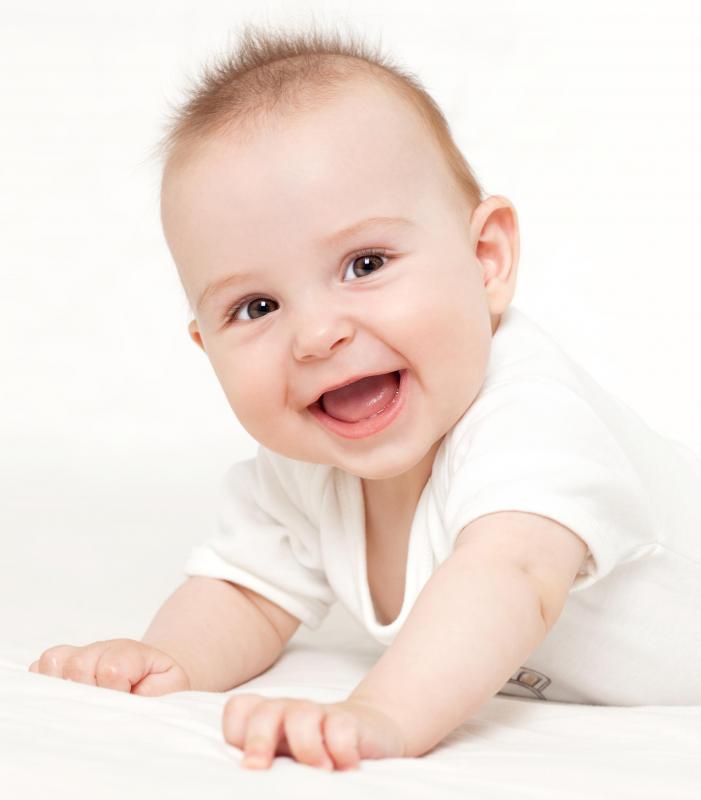At WiseGEEK, we're committed to delivering accurate, trustworthy information. Our expert-authored content is rigorously fact-checked and sourced from credible authorities. Discover how we uphold the highest standards in providing you with reliable knowledge.
What Are the Different Types of Eye Drops for Babies?
There are not too many different types of eye drops for babies that are considered safe by the medical community. Parents should check with the child's physician if eye infections or irritations occur. Health care providers generally prescribe antibiotic preparations in dosages that will eliminate infection while producing the smallest number of adverse effects. Even eye drops for children contain formulations that are too strong for the small bodies of young infants. Some pediatricians suggest applying a couple of drops of mother's milk to the irritated eye.
In the hours shortly after birth, health care professionals use antibiotic eye drops for babies as a safeguard against any possible infections the infant might have contracted in the womb. Silver nitrate was the medication of choice for decades, but physicians changed to erythromycin because it has fewer irritating effects. Occasionally infants develop what appear to be eye infections, commonly called pink eye, that cause redness and crusty drainage. Parents should consult with a physician prior to putting any substance into a baby's eyes, as many medications overwhelm small infants. A health care provider may prescribe tobramycin or other antibiotic solutions deemed safe for use in babies.

Many ophthalmologists offer baby eye exams to evaluate whether the child's eyes function together and accommodate for changes in light. The ophthalmologist might use eye drops that dilate the pupils, allowing the physician to examine the inner eye for signs of astigmatism or nearsightedness. The effects of the eye drops usually include blurred vision, which lasts for up to 90 minutes following the examination. Occasionally infants develop cataracts or glaucoma, but there are no safe prescription eye drops for babies that treat these conditions, and infants may require corrective surgery.

Over-the-counter allergy eye drops are generally formulated for use in children aged six and older. If an infant develops eye irritation that does not seem to be related to a respiratory infection, parents should not use eye drops for babies unless advised by a physician. Special prescription eye drops might be used for allergies, or health care providers can suggest other methods of soothing irritated eyes. Medicinal eye drops containing cortisone or steroid derivatives are not recommended, as the formulations may cause bone, joint or tendon weakness, and deformities.
AS FEATURED ON:
AS FEATURED ON:














Discussion Comments
When doctors do prescribe eye drops for babies, it can be very difficult to put them in their eyes. A good tip for putting this type of medicine in a baby's eyes is not to try to hold them eyes open. Instead, distract baby's attention by getting him or her to look at an object, and quickly apply the drops.
When my kids were young, they had a lot of eye irritations. However, I would never have used any eye drops in their eyes unless a doctor had prescribed them. I found that warm or cool cloths worked very well for soothing irritated eyes.
Post your comments